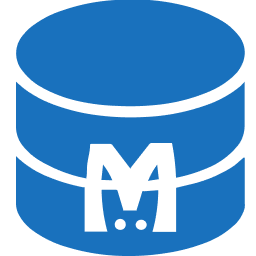New to KubeDB? Please start here.
Using Custom Configuration File
KubeDB supports providing custom configuration for ClickHouse. This tutorial will show you how to use KubeDB to run a ClickHouse with custom configuration.
Before You Begin
At first, you need to have a Kubernetes cluster, and the kubectl command-line tool must be configured to communicate with your cluster. If you do not already have a cluster, you can create one by using kind.
Now, install KubeDB cli on your workstation and KubeDB operator in your cluster following the steps here.
To keep things isolated, this tutorial uses a separate namespace called
demothroughout this tutorial. Run the following command to prepare your cluster for this tutorial:$ kubectl create ns demo namespace/demo created
Note: The yaml files used in this tutorial are stored in docs/examples/clickhouse folder in GitHub repository kubedb/docs.
Overview
ClickHouse allows configuring via configuration file. The default configuration file for ClickHouse deployed by KubeDB can be found in /etc/clickhouse-server/config.xml. When spec.configSecret is set to clickhouse, KubeDB operator will get the secret and after that it will validate the values of the secret and then will keep the validated customizable configurations from the user and merge it with the remaining default config. After all that this secret will be mounted to clickhouse for use it as the configuration file.
To learn available configuration option of ClickHouse see Configuration Options.
At first, you have to create a secret with your configuration file contents as the value of this key clickhouse.yaml. Then, you have to specify the name of this secret in spec.configSecret.name section while creating clickhouse CRO.
Custom Configuration
At first, create clickhouse.yaml file containing required configuration settings.
$ cat clickhouse-config.yaml
profiles:
default:
max_query_size: 200000
Now, create the secret with this configuration file.
➤ kubectl create secret generic -n demo clickhouse-configuration --from-file=./clickhouse-config.yaml
secret/clickhouse-configuration created
Verify the secret has the configuration file.
➤ kubectl get secret -n demo clickhouse-configuration -oyaml
apiVersion: v1
data:
clickhouse.yaml: cHJvZmlsZXM6CiAgZGVmYXVsdDoKICAgIG1heF9xdWVyeV9zaXplOiAxNTAwMDA=
kind: Secret
metadata:
creationTimestamp: "2025-08-20T12:05:24Z"
name: clickhouse-configuration
namespace: demo
resourceVersion: "199185"
uid: a3439cc2-af41-441a-ad07-56572c86b9c2
type: Opaque
➤ echo cHJvZmlsZXM6CiAgZGVmYXVsdDoKICAgIG1heF9xdWVyeV9zaXplOiAxNTAwMDA= | base64 -d
profiles:
default:
max_query_size: 200000
Now, create clickhouse crd specifying spec.configSecret field.
apiVersion: kubedb.com/v1alpha2
kind: ClickHouse
metadata:
name: ch-standalone
namespace: demo
spec:
version: 24.4.1
configSecret:
name: clickhouse-configuration
replicas: 1
storage:
accessModes:
- ReadWriteOnce
resources:
requests:
storage: 2Gi
deletionPolicy: WipeOut
➤ kubectl create -f https://github.com/kubedb/docs/raw/v2025.7.31/docs/examples/clickhouse/configuration/ch-custom-config-standalone.yaml
clickhouse.kubedb.com/ch-standalone created
Now, wait a few minutes. KubeDB operator will create necessary petset, services, secret etc. If everything goes well, we will see that a pod with the name cas-custom-config-0 has been created.
Check that the petset’s pod is running
➤ kubectl get pod -n demo
NAME READY STATUS RESTARTS AGE
ch-standalone-0 1/1 Running 0 21m
Now, we will check if the clickhouse has started with the custom configuration we have provided.
Now, you can exec into the clickhouse pod and find if the custom configuration is there,
➤ kubectl exec -it -n demo ch-standalone-0 -- bash
Defaulted container "clickhouse" out of: clickhouse, clickhouse-init (init)
clickhouse@ch-standalone-0:/$ cd /etc/clickhouse-server/conf.d
clickhouse@ch-standalone-0:/etc/clickhouse-server/conf.d$ ls
clickhouse-config.yaml server-config.yaml
clickhouse@ch-standalone-0:/etc/clickhouse-server/conf.d$ cat clickhouse-config.yaml
profiles:
default:
max_query_size: 200000
clickhouse@ch-standalone-0:/etc/clickhouse-server/conf.d$ exit
exit
As we can see from the configuration of running clickhouse, the value of max_query_size has been set to our desired value successfully.
Cleaning up
To clean up the Kubernetes resources created by this tutorial, run:
kubectl delete ch -n demo ch-standalone
kubectl delete secret -n demo clickhouse-configuration
kubectl delete ns demo
Next Steps
- Detail concepts of ClickHouse object.
- Detail concepts of ClickHouseVersion object.
- Want to hack on KubeDB? Check our contribution guidelines.

































